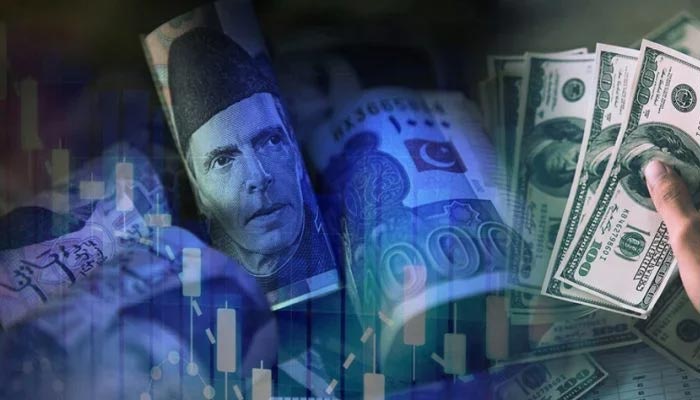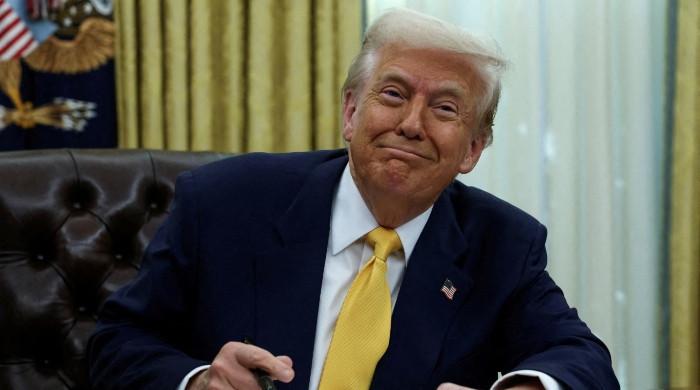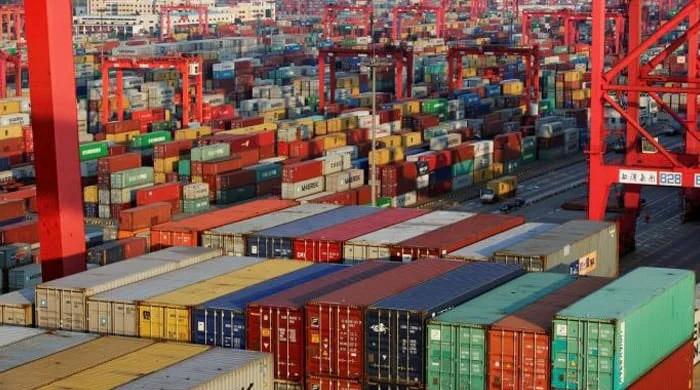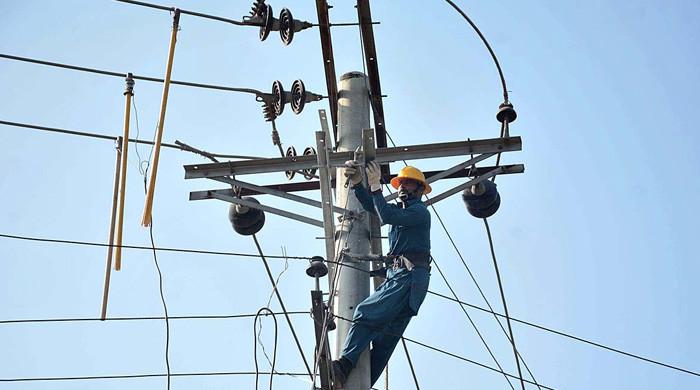Rupee shoots past 209 against US dollar in interbank market
Currency devalued for seventh consecutive working day amid uncertainty over revival of IMF programme
June 20, 2022

- Rupee devalued for seventh consecutive working day.
- Pressure comes amid uncertainty over revival of IMF programme.
- Traders expect rupee to settle within a range of 195-200 per dollar if IMF deal is finalised.
KARACHI: In line with market expectations, the Pakistani rupee has plunged further and crossed the 210 threshold against the US dollar in the interbank market during intra-day trade for the first time in the interbank market on Monday.
The domestic currency closed at Rs209.96 against the greenback in the interbank market after losing Rs1.21, or 0.65%, according to the State Bank of Pakistan (SBP).
This is the seventh consecutive working day of free-fall in the rupee, losing approximately Rs6, or over 3%, to date.
The central bank has seemed helpless in controlling the speculative fall in the rupee as demand for the greenback continues to soar due to quarter-end payments pressure.
Read more: How a turbo-charged dollar is zooming past several Asian currencies
“The currency will continue to fall until Pakistan manages to strike a staff-level agreement with the International Monetary Fund (IMF),” AA Commodities Director Adnan Agar said while speaking to Geo.tv.
The analyst was of the view that the investors’ confidence is completely shattered which can only be strengthened by positive development on the IMF front.
Agar also mentioned that depleting foreign exchange reserves has triggered panic buying giving speculators a chance to play with the demand and supply of the greenback.
Since the beginning of this fiscal year (July 1, 2021) to date, the rupee has collectively dropped by a massive 33.27% (or Rs52.42) compared to the previous fiscal year’s close at Rs157.54.
The rupee has maintained a downward trend for the last 13 months. It has lost 37.88% (or Rs57.69) to date, compared to the record high of Rs152.27 recorded in May 2021.
Meanwhile, Exchange Companies Association of Pakistan (ECAP) Chairperson Malik Bostan identified widening trade deficit, political instability, and declining foreign direct investment as major reasons behind the devaluation of the local currency.
“Political stability is key for economic development,” he said, adding that former prime minister Imran Khan’s call for another long march may adversely affect the rupee-dollar parity.
Read more: US agrees to help Pakistan negotiate deal with IMF
The currency expert was of the view that the positive news from the Financial Action Task Force (FATF) will help attract foreign investments which will increase the availability of the greenback.
If the IMF deal is finalised, traders expect the rupee to settle within a range of 195-200 per dollar till the end of the outgoing fiscal year 2021-22.
Worst performing currencies
Pakistan’s currency is one of the worst performers in the world as it has depreciated by 14.57% against the dollar this year, the data compiled by Ismail Iqbal Securities showed.
It is not the rupee that has tumbled and underperformed its regional peers and various global currencies, but other ones are taking a beat.
Explainer: What will it mean for Pakistan to be removed from the FATF grey list?
Pak rupee and the Japanese yen fell almost equally against the dollar this calendar year to date. The yen declined by 13.34%.
The local unit is one of the 15 currencies that have lost ground. The Sri Lankan rupee has been the worst-performing, plummeting 43.9%, with the Laotian Kip battering 24%, Turkish Lira 23.18%, and Ghana Cedi 22.33%, respectively, the data revealed.
On the other hand, the State Bank of Pakistan (SBP) said that it has not prevented the banks from paying for the imported items.
According to the SBP spokesperson, a payment of about $200 million has been made for the imports today.
However, as foreign exchange reserves are depleting, the SBP is focusing on dollar management under which it has now made it mandatory for the importers to submit a pre-requisite for opening a Letter of Credit, particularly for the import of cars, cell phones or any machinery.











